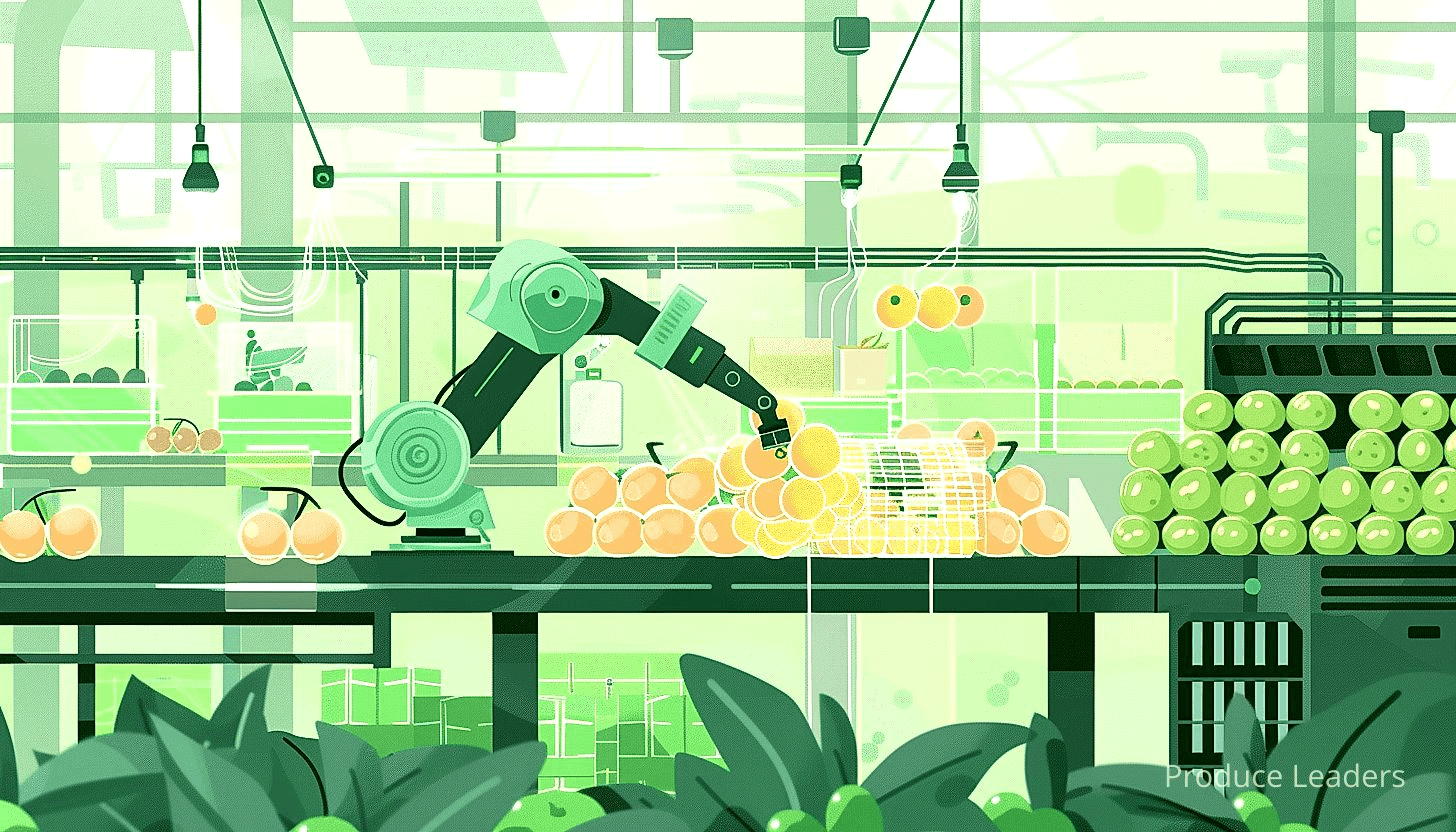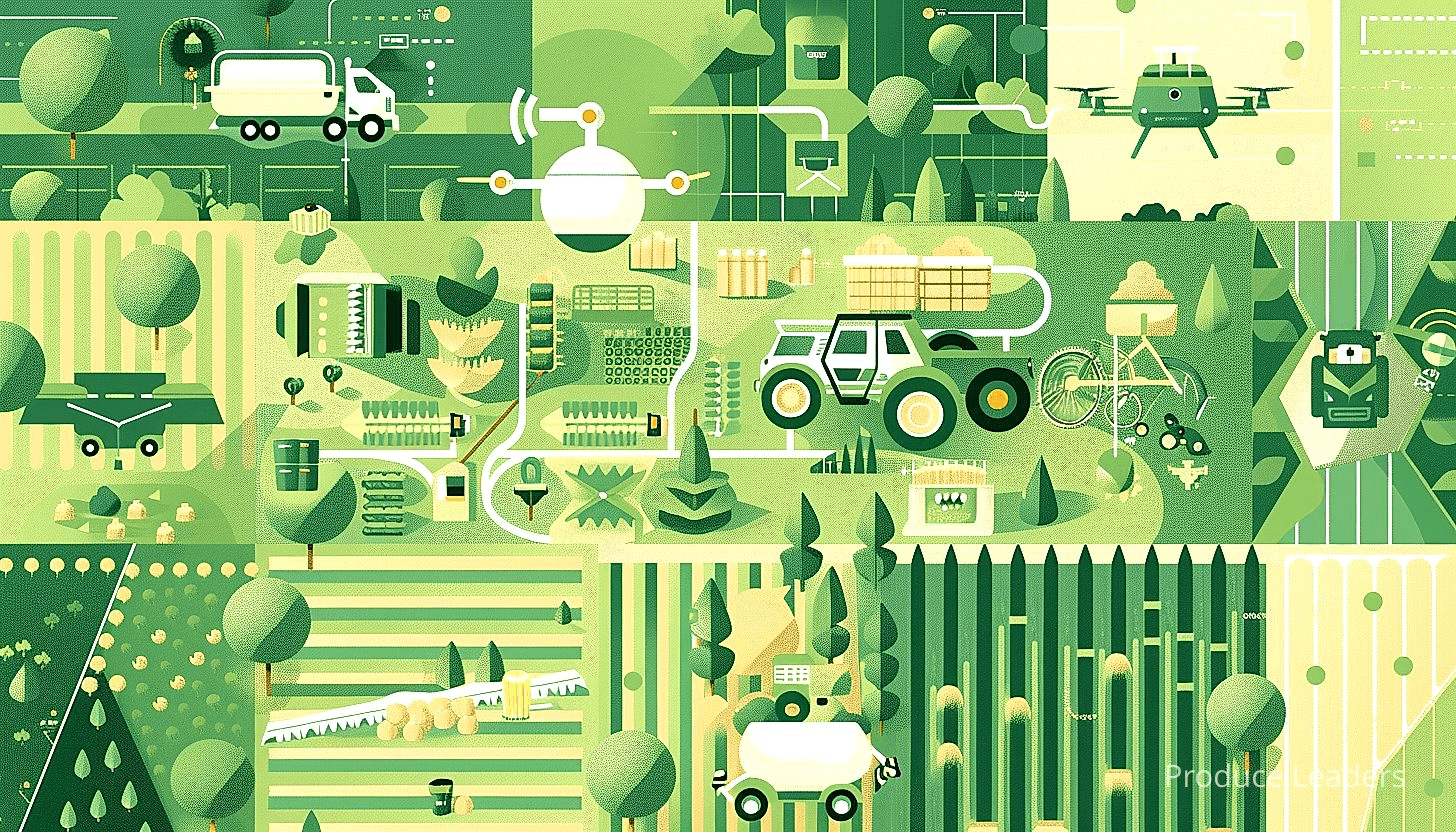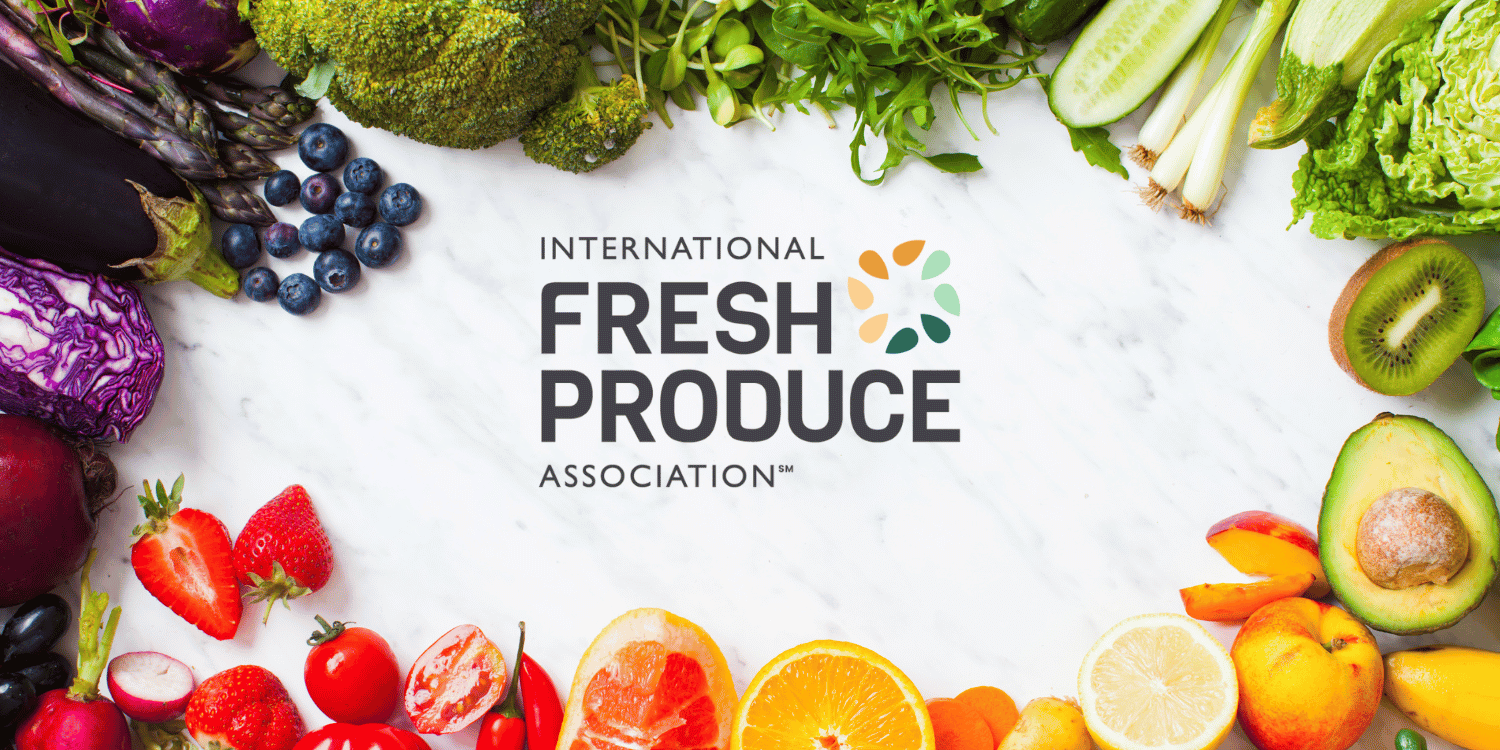Artificial Intelligence (AI) has proven impressive in its ability to streamline numerous sectors, including the world of fresh produce supply chain.
Its agile capability of mimicking human intelligence and improving decision-making tasks has become a game changer in this industry.
Through AI, complexities encountered in the supply chain, from forecasting demand to minimizing waste, can be addressed efficiently.
Yet despite the clear benefits, many businesses struggle to understand and incorporate this technology into their operations.
This blog post dig ins into the profound impact of AI in reshaping and optimizing the produce supply chain.
It will provide actionable insights on how AI can be leveraged effectively for businesses in this sector.
- AI facilitates accurate demand forecasting in supply chain optimization.
- Automated inventory management improves efficiency in the produce trade.
- Predictive maintenance of machinery aids uninterrupted operations.
- Real-time route optimization ensures speedy and cost-effective delivery.
- AI aids in supplier quality evaluation and smart procurement strategies.
While the aforementioned points have demonstrated how AI enhances various aspects of the supply chain, there is certainly more to uncover.
In the upcoming sections, we will explore further interesting applications of AI in this field, some of which may not have crossed your mind.
For instance, we’re going to look into how AI is transforming the way we track and trace goods, and how it is revolutionizing warehouse management.
I am certain that this wealth of information we are going to share will provide added insights and encourage further exploration into this growing intersection of technology and trade.
Contents [hide]
Ai Applications In Supply Chain Optimization For Produce
1. AI Demand Forecasting
In Short: AI demand forecasting is increasingly vital in supply chain optimization, helping maintain balance between supply and demand and promoting profitability even in competitive markets. Leveraging AI’s real-time analysis, seasonal adjustments and machine learning capabilities enables accurate forecasts, making business operations more resistant to market volatility, uncovering growth opportunities, and supporting future planning.
In light of the recent advancements in technology, Artificial Intelligence or AI is being increasingly utilized in various areas of business including the optimization of supply chain operations for produce.
One such area of focus is AI Demand Forecasting, a key practice for maintaining the balance between supply and demand in order to optimize the efficiency of produce supply chains.
Accurate demand forecasting is an essential ingredient for the successful operation of a supply chain, without which efficiency is compromised and business profits can take a significant hit.
Understanding customer demand patterns and market trends can be an arduous task, especially in the case of perishable goods like produce where the window for selling is extremely short.
In such scenarios, AI can come to the rescue by leveraging historical data and using sophisticated algorithms to predict future demand with a high degree of accuracy.
This capacity to accurately predict upcoming demand allows supply chains to plan effectively, manage inventory, and remain profitable in a competitive market landscape.
Within the scope of demand forecasting, AI possesses a few important attributes that make it a game-changer.
Here are a few key aspects:
- Real-time Analysis: AI systems have the advantage of being able to analyze real-time data, adjusting predictions and notifications of demand changes instantly. This on-the-fly accuracy is a significant step up from the traditional forecasting methods which often struggle to keep pace with ever-changing market dynamics.
- Seasonal Adjustments: AI has the ability to consider and adjust for seasonal effects which can drastically affect demand for various produce. This is beyond the capacity of many traditional forecasting models which typically involve manual adjustment for seasonality.
- Machine Learning: Over time, these AI systems are able to use machine learning to improve their accuracy. With every forecast, the AI system learns and adapts, effectively “getting smarter” over time and enhancing future demand forecasts.
Furthermore, AI demand forecasting doesn’t just focus on the ‘what’, but also tries to provide reasoning for ‘why’ certain demand changes occur. This deeper level of insight not only aids in future planning but can also uncover new opportunities for growth and cost savings.
With error reduction and efficiency improvement being the ultimate goals, the adaptability of AI demand forecasting to real-time market changes goes a long way in achieving these objectives.
By providing timely and accurate insights, these smart technologies not only optimize supply chain operations for produce but also make them more resilient, capable of quickly adapting to unforeseen circumstances and volatile market conditions.
As we dig in further into the digital era, AI’s role in supply chain optimization is likely to expand even more, making it a crucial tool for companies to keep up with the evolving business landscape.
Pro Tip: Implement AI demand forecasting in your supply chain operations to accurately predict future demand, optimize inventory management, and enhance overall efficiency in a competitive market landscape.
Whether developing new algorithms for machine learning, enhancing predictive models, or integrating real-time data streams, the intersection of AI and demand forecasting in supply chain optimization is an exciting area for growth and innovation.
The future of supply chains is, without a doubt, a lot smarter and more efficient with the integration of AI in processes such as demand forecasting, among others.
2. Automated Inventory Management
In Short: Automated inventory management, powered by AI, is key to efficient management in the produce supply chain, offering accurate stock levels, demand forecasting, and real-time tracking. This system not only increases operational efficiency and customer satisfaction, but also offsets initial implementation costs with long-term benefits like labor and cost savings, and adaptability to business changes.
The advancement of Artificial Intelligence (AI) has introduced an unprecedently efficient system in the management of inventory in the produce supply chain: Automated inventory management
Automated inventory management system is a transformative solution capable of easing the significant challenges faced in the management of produce inventory.
This AI-powered system bolsters the ability to have accurate statistics on the stock levels, allowing the management to maintain an optimal inventory point.

One key characteristic of this system is its ability to forecast demand and generate purchase order quantities that align with such anticipated demand.
This is important in a produce supply chain, where perishable inventory is at the heart of operations and having too much or too little can have significant repercussions.
Moreover, its real-time tracking features reduce manual tasks and eliminate clumsy paperwork, promoting efficiency and reducing associated human errors.
Its integrated data analysis ability also offers valuable insights that can be crucial in making informed inventory management decisions.
Attractions towards automated inventory management are not only tied to its demand forecasting capability and efficient management but also to its impressive adaptability characteristics.
The system is treasured for its ability to upgrade and adjust to business changes or shifts in demand patterns, ensuring an always-optimal system.
Here are some of the practical ways in which AI is used in automating inventory management processes in the produce supply chain:
- Demand forecasting: AI technology can analyze industry trends, historical sales data and other relevant factors to predict future product demand accurately. By knowing what, when and how much customers will buy, businesses can optimize their procurement and maintain appropriate inventory levels.
- Automated ordering: By linking the inventory management system with procurement, AI can ensure there’s always optimal stock levels by triggering automatic restock orders when the inventory hits the reorder point.
- Predictive analysis: AI’s capability to analyze and interpret complex data helps in predicting future events such as potential inventory shortages or surpluses. It aids in making informed decisions on inventory management.
Besides the labor-saving feature, an automated inventory management system also offers other cost-saving prospects.
The system’s ability to maintain an optimal inventory reduces occurrences of stock-outs or overstocks thus saving on associated costs.
Capital tight up in excessive inventory can be freed and used on better-returning operations.
When properly implemented, automated inventory management can be a game-changer in the produce supply chain, offering a win-win situation for both the business and customers.
It leads to improved operational efficiency, minimizes losses from wasted produce, and enhances customer satisfaction by ensuring the produce availability at all times.
Even though initial implementation may come with significant costs, the long-term benefits of automated inventory management in the produce supply chain make it a necessary investment.
3. Predictive Maintenance for Machinery
In Short: Artificial Intelligence (AI) is revolutionizing maintenance practices in the produce supply chain by predicting machinery faults and optimizing performance. AI-powered tools not only save time and costs by reducing downtime but also enhance productivity, machine longevity, and overall efficiency.
The integration of Artificial Intelligence (AI) in maintaining machinery within the supply chain for produce is an innovative stride towards achieving efficiency and cost containment.
By incorporating AI into the routine maintenance practices, companies are now able to predict potential breakdowns and mechanical issues beforehand, thus saving time and resources.
In the produce supply chain, it’s critical to have machinery effectively functioning at all times, especially due to the fragile nature of fresh produce and the importance of maintaining its quality.
AI-powered predictive maintenance tools employ machine learning algorithms to learn from historical data, understand patterns, and predict potential faults in the machinery.
This timely prediction saves companies from incurring huge losses due to unforeseen machine breakdowns or costly repairs.
Moreover, this type of preventative measure contributes to enhanced productivity and less downtime, which is of immense importance in a supply chain environment.
AI’s role in predictive maintenance isn’t merely isolated to detecting problems; it also identifies optimization opportunities to improve the performance of these machines.
Let’s further dig in into the key facets of AI in predictive maintenance:
- Real-time monitoring: AI solutions help keep an eye on the performance of machinery round the clock, providing constant health checks.
- Early problem detection: The AI learns from historical patterns and is thus able to notify issues before they become major problems.
- Reduction of operational cost: Predictive maintenance helps in structuring the maintenance processes effectively, reducing unnecessary costs.
- Enhancement of machine longevity: Routine checks and timely identification of issues contribute significantly to prolonging the lifespan of the machinery.
One of the fascinating aspects of AI in predictive maintenance is the use of prognostics which provides forecasts about machinery failure times, primarily based on current and historical state data.
In addition, some AI solutions comprise digital twins technology. Digital twins create a virtual representation of the machinery to simulate different scenarios, facilitating effective problem-solving and potential enhancements.
In essence, these AI-driven solutions provide a holistic overview of the health and reliability of the machinery being used, in real-time and over time.
It is noteworthy to emphasize that AI-powered predictive maintenance is still advancing, thus the potential improvements and enhancements are boundless.
Adopting such technology not only revolutionizes the handling of machinery, but also can further tighten control over the supply chain’s processes, steering your produce business towards unprecedented levels of quality and efficiency.
4. Real-time Route Optimization
In Short: Artificial intelligence (AI) applications in supply chain management have enabled real-time route optimization, substantially improving the efficiency of goods transportation, especially in the produce sector. This innovation not only ensures faster and timely deliveries but also offers significant cost savings by automatically adjusting to changing circumstances like traffic and weather conditions.
With the rise of artificial intelligence (AI) applications in supply chain management, one of the most notable improvements has come in the form of real-time route optimization.
This innovation is particularly valuable for businesses dealing with produce because in such cases, the element of time is absolutely critical — fresh produce cannot sit in a warehouse or in transit for very long.
Real-time route optimization is the answer to this challenge, as it allows for the fastest and most efficient transportation of goods from the farm to the consumer.

AI-based systems can analyze a vast array of data to calculate the optimal route for delivery, considering factors like traffic, weather conditions, and road works.
But there is more to this innovative system than just calculating routes.
These systems are also capable of dynamic adjustments, meaning routes can be recalculated and adjusted in real-time based on changing circumstances.
For instance, if there is a sudden traffic jam or a road closure, the system can immediately analyze alternative routes and make the necessary adjustments to ensure the delivery is not delayed.
This not only results in improved efficiency and reduced delivery times, but also contributes to significant cost savings by minimizing fuel consumption and vehicle wear and tear.
For the produce sector especially, any delay in delivery could spell disaster, leading to spoiled produce and financial losses.
Let’s take a moment to sum up some of the core benefits of AI assisted real-time route optimization:
- Improved Efficiency: By calculating the best routes and avoiding traffic disruptions, AI helps reduce delivery times.
- Cost Savings: Efficient routing translates into fuel savings, reduced vehicle maintenance costs, and less manpower.
- Dynamic Adjustments: Real-time adjustments to the delivery routes help deal with unexpected road situations, ensuring on-time delivery.
- Fresh Produce: For the produce industry, timely delivery means fresher goods and minimized losses from spoiled stock.
We’ve seen how integrative AI applications, such as real-time route optimization, have the potential to radically transform the landscape of supply chain management, particularly in the produce industry.
Where traditional methods of route planning could take hours, these smart systems can perform the same task in seconds, with increased accuracy and efficiency.
Moreover, imagine a world where produce is always fresh, where waste is minimized, and where consumers receive their purchases in the shortest possible time.
This is not a far-fetched dream, but a rapidly approaching reality made possible by the power of AI applications, and with real-time route optimization taking the lead, global supply chains are set for an unprecedented revolution.
As we move forward in our discussion on AI applications in optimizing produce supply chains, it’s evident that technology is not just a disruptor but a game-changer that holds the potential to redefine operations and elevate customer satisfaction to new heights.
5. Supplier Quality Evaluation
In Short: Artificial intelligence (AI) has greatly transformed supplier quality evaluation in supply chain management, offering systematic assessments through machine learning algorithms. It provides automated quality checks, predicts risks, yields improved insights and aids strategic decision making, which are essential in industries like produce, sensitive to perishable commodities.
In the vast sphere of supply chain optimization, supplier quality evaluation stands as an essential pillar for ensuring a seamless exchange of goods and services.
Notably, with the advent of artificial intelligence (AI), there has been transformative progress in how businesses evaluate the quality of their suppliers.
Implementing AI allows businesses to analyze large volumes of data from various sources in real-time.
A critical aspect of AI in supplier quality evaluation involves the use of machine learning algorithms.
These algorithms work tirelessly to learn, adapt and improve the evaluation process based on acquired data, thereby enabling a systematic assessment of supplier performance.
The following are some key elements where AI shines in the realm of supplier quality evaluation:
- Constant Evaluation: Systems are designed to continuously analyze supplier performance over specified periods.
- Automated Quality Checks: AI helps in swift identification and elimination of any defects or discrepancies in the products/services supplied.
- Risk Mitigation: AI can predict potential risks associated with a supplier, thereby enabling proactive remedial measures.
- Improved Insights: Through the utilization of AI, companies can gain deeper insights into a supplier’s capability, production potential and delivery punctuality.
Initiating automated assessment of supplier quality reduces the chance of human error.
It also enables an unbiased and accurate appraisal of the supplier’s performance, which is crucial in strategic decision-making.
In the context of the produce industry, the application of AI in supplier quality evaluation can be magnified.
This sector is particularly sensitive to any variation in quality due to the perishable nature of the commodities involved.
Moreover, regular predictive analysis can forecast potential future performance based on existing trends and historical data.
Such predictions are invaluable when deciding whether to continue, terminate or diversify supplier contracts.
Increasingly, businesses operating in the supply chain and produce industry are recognizing the potential advantages of implementing AI.
This technology is undoubtedly revolutionizing supplier quality evaluation, enhancing both efficiency and effectiveness.
6. Smart Procurement Strategy
In Short: Artificial Intelligence (AI) has significantly enhanced procurement in the supply chain industry, optimizing processes, predicting demand, aiding strategic decision making, and more. An AI-driven smart procurement strategy is paramount for an efficient supply chain, fostering better supplier relationships, reducing costs, and increasing overall efficiency and profitability.
With improvements in technology, Artificial Intelligence (AI) is playing a substantial role in enhancing and streamlining the procurement process in the supply chain industry.
Integration of AI has made smart procurement an achievable feat in supply chain management.
From automating repetitive tasks to making complex purchase decisions, AI can radically transform traditional procurement strategies.

This new AI-driven smart procurement strategy not only reduces human effort but also increases procurement efficiency.
When combined with predictive analytics, AI can help businesses make more informed decisions while procuring supplies.
It can forecast demand trends by analyzing historical data and predicting future consumer demands accurately.
Furthermore, it provides insightful suggestions to tweak procurement strategies, ensuring supplies never run out or go in excess.
Here are some of the key advantages an AI-driven smart procurement strategy brings to the table:
- Optimized procurement process: AI streamlines procurement management by automating most processes including paperwork, contracts, reporting, and data analysis.
- Predictive analytics: By analyzing historical data, AI can predict demand, calculate the best procurement time, and determine optimal quantities to order.
- Strategic decision making: AI enhances the procurement process by providing data-driven insights which aid in strategic decision making.
- Supplier selection: With AI, companies can analyze suppliers’ performance and choose the best one.
AI-equipped procurement systems offer a strategic approach to the purchasing process.
They improve transparency by providing real-time tracking of orders and shipments, reducing any discrepancies in the chain.
Supply chains that adopt AI-driven smart procurement also increase their operational efficiency.
They are able to identify potential risks in the procurement process and take preventive measures to mitigate them.
Moreover, AI systems can use machine learning algorithms to learn from past mistakes, increasing the performance of procurement systems over time.
They also boost the effectiveness of negotiations by providing accurate market insights, giving companies an edge when negotiating terms with suppliers.
AI-driven procurement systems ensure consistency in ordering and facilitate seamless transactions, leading to a more efficient supply chain.
Finally, AI in procurement fosters better relationships with suppliers based on data-driven insights and fairness in dealings.
It ensures optimum use of resources, reducing the overall procurement costs and leading to increased profitability.
In the context of the produce supply chain, using AI in procurement means smart selection, lower waste, fresher products, and overall increased customer satisfaction.
Therefore, the integration of AI in procurement is not just a luxury, but a necessity for an efficient and optimized supply chain.
And with constant advancements in AI, one can only imagine how much more streamlined and efficient procurement strategies will become in the future.
7. Robotic Process Automation
In Short: Artificial Intelligence and Robotic Process Automation (RPA) can significantly improve the efficiency, speed, and accuracy of supply chain operations, particularly in areas such as data entry, real-time tracking, and automated communication. However, strategic implementation is essential, with clear understanding of capabilities and constraints, to fully exploit its potential and drive a more optimized supply chain.
The application of Artificial Intelligence (AI) in the realm of supply chain optimization goes beyond demand forecasting or route optimization.
It has the potential to make a tangible impact in Robotic Process Automation (RPA).
RPA, when combined with AI, can warrant advanced automation in the supply chain, particularly in sectors such as produce, where freshness and quick delivery are paramount.
In essence, RPA is about automating manual, repetitive tasks that are otherwise time-consuming and error-prone.
These tasks are usually rule-based, making them ideal for automation.
In the context of the produce supply chain, RPA can streamline various essential aspects, not least of which are discussed in the following points:
- RPA can automate the process of data entry for order details, tracking numbers, and delivery schedules, which are typically prone to human errors.
- RPA bots can work round-the-clock and perform real-time tracking of shipments, thus providing a more accurate ETA for produce delivery. This, in turn, ensures prolonged freshness.
- RPA can also help in facilitating automated communication with suppliers and customers, enabling quick responses and resolutions to queries.
By automating these tasks, RPA can help organizations improve efficiency, speed, and accuracy as they manage their supply chain.
Furthermore, RPA, coupled with AI’s machine learning capabilities, can learn and evolve, continuously fine-tuning its operations to optimize the supply chain further with every iteration.
It is worth noting, however, that the deployment of RPA needs to be a calculated move.
Just like any other technological innovation, it should be adopted with a clear understanding of its capabilities and constraints to exploit its full potential.
While RPA has the potential to transform supply chain operations dramatically, it should be implemented strategically.
It is essential to identify the areas where automation can significantly impact performance and productivity and start aft that.
Important: RPA, combined with AI, can warrant advanced automation in the supply chain, streamlining various aspects and improving efficiency, speed, and accuracy.
As we all know, RPA presents an unprecedented opportunity to revolutionize the supply chain for produce by increasing efficiency, precision, and turn-around-time.
With the right approach and a clear strategy, enterprises can deploy AI-powered RPA to fuel their journey towards a more optimized supply chain.
The Bottom Line
The integration of AI applications in supply chain optimization for produce has fundamentally altered this sector, demonstrating its potential for revolutionizing operations in other industries as well.
From boosting supply chain reliability to reducing waste levels and improving decision-making processes, AI offers massive value to businesses and to society as a whole.
Moreover, the implementation of AI technology illustrates the compressed boundaries within modern business by linking farmers, retailers, and consumers in an efficient and transparent system.
Most importantly, it reiterates that those who don’t embrace technological advancements risk falling behind in an ever-evolving global market.
Therefore, it’s paramount for companies to keep up with these developments and incorporate suitable AI applications into the supply chain process, contributing to sustainable and smart practices conducive to global progress.




















